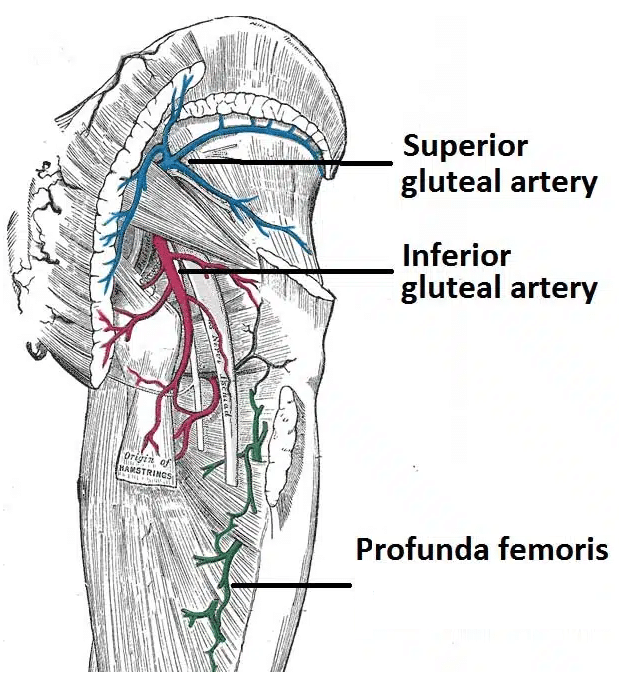The superior gluteal artery is a terminal branch of the internal iliac artery.
It contributes to the blood supply of structures within the pelvis and gluteal region.
Course
The superior gluteal artery arises within the pelvis as the terminal branch of the posterior trunk of the internal iliac artery.
It passes posteriorly, between the lumbosacral trunk and S1 nerve root, before leaving the pelvic cavity via the greater sciatic foramen.
It enters the gluteal region superiorly to the piriformis muscle, and then divides into two main branches:
- Superficial branch – travels between the superficial surface of gluteal medius and the deep surface of gluteus maximus.
- Deep branch – travels deep to the gluteus medius and subdivides into superior and inferior branches:
- The superior division extends superiorly along the gluteus minimus and eventually anastomoses with the deep iliac circumflex artery and the ascending branch of the lateral femoral circumflex artery.
- The inferior division extends across the gluteus minimus in an oblique manner. It supplies branches to the gluteal muscles and eventually anastomoses with the lateral femoral circumflex artery.
Supply
The superior gluteal artery contributes to the blood supply of the following structures:
- Skin and muscle of the gluteal region – gluteus maximus, medius, minimus, piriformis, obturator internus, quadratus femoris.
- Head of the femur
- Tensor fascia lata
